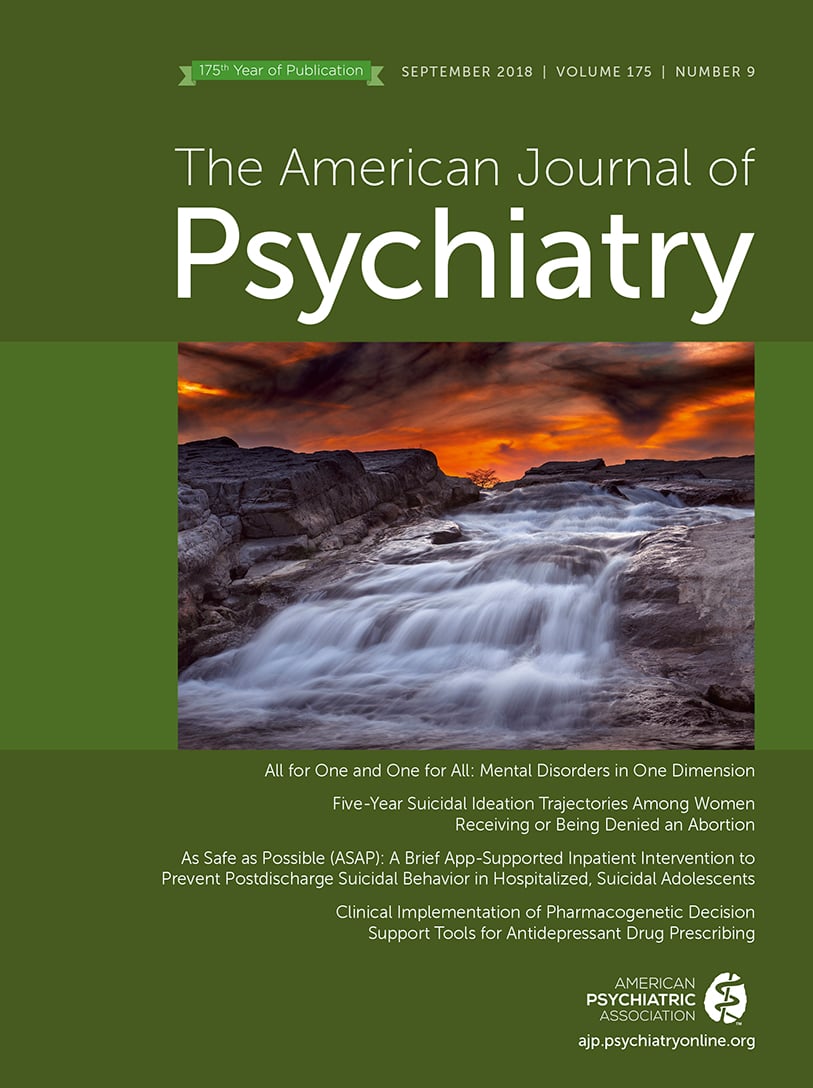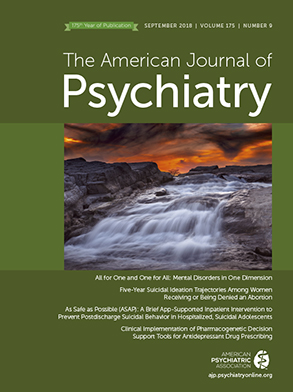Losing a parent during childhood is one of the most tragic life experiences, and one that can set the stage for later psychopathology (
1). However, findings from cross-sectional studies cannot disentangle whether poor outcomes stem directly from the loss, from the lack of parental support in subsequent childhood years, or from risk factors present even before the parent’s death. Longitudinal studies are required to determine the timing and mechanisms by which these tragedies convey risk to children. This is critical information for planning how and when to intervene.
In this issue of the
Journal, Pham and colleagues (
2) report on the 7-year outcomes from a prospective, longitudinal study tracking long-term mental health sequelae following the loss of a parent. The study included 216 bereaved and 172 nonbereaved children and adolescents ages 7–18 years. Causes of parental deaths were suicide, accidents, or sudden natural death. Children and parents were evaluated at five time points across the 7 years following the parent’s death. While this is the first report on the 7-year data, several key contributions have been made from previous assessments. At 21 months, bereaved children were more likely to have depression and alcohol use than nonbereaved children, especially those who lost a parent to suicide (
3). Children who had prolonged grief reactions (who also had greater rates of preexisting depression) were at greatest risk for functional impairment and depression at 33 months, even after controlling for preexisting risk factors (
4). Five years after the death, children whose depression was related to bereavement had an earlier age of onset of depression and had fewer adverse life events than nonbereaved children with depression (
5).
In this issue’s article, similar to findings from other longitudinal studies (e.g.,
6,
7), bereaved children had more risk factors than nonbereaved children, such as preexisting child psychopathology, history of maltreatment, and parental psychiatric disorders. Bereaved children had higher rates of depression and posttraumatic stress disorder (PTSD) within the 2 years after the loss than the comparison group, even after adjusting for predeath variables. Children who lost their parent prior to age 12 were at especially high risk for depression. After 2 years, the depression rates of the nonbereaved sample increased to equal those of the bereaved group, as both cohorts moved into the higher risk period of adolescence.
Children whose parents died of suicide or natural death were at greater risk of PTSD than those whose parents had accidental deaths. Bereavement was associated with greater impairment at all time points and was not related to type of parental death. Bereaved youths had a greater incidence of suicidal ideation; however, this was no longer significant after controlling for predeath variables, suggesting that suicidality risk stems from genetic and early experiences prior to the parental death. The path analysis revealed that bereavement had a direct effect on impairment; indirect links to impairment occurred via early and later depression symptoms and negative life events. Child psychiatric disorder prior to parental loss also contributed to functional impairment via multiple pathways, including social support, negative life events, and depression symptoms at 9 months.
This study represents the longest-term follow-up of parentally bereaved children yet published. Additional strengths include the in-person clinical assessments with both parent and child at multiple time points and the careful consideration of premorbid factors contributing to psychopathology and impairment. Findings from longitudinal studies like this one are exciting because they suggest when and how to intervene with children who have lost a parent. For example, now that we know that the first 2 years after losing a parent is a period of critical risk for developing depression, especially for children who lost their parent before age 12, we should devote resources to developing tailored and developmentally appropriate assessment and prevention efforts targeting this risk period in bereaved children. Similarly, the finding that bereaved youths have increased suicidal thoughts (even though the association between bereavement and suicide did not withstand correction for predeath factors) tells us that bereaved children are at particular risk and represent an important subgroup to focus on for intervention. These results are critical given that prevention of youth suicide represents one of the most important goals of our field.
Several limitations of this study point to unanswered questions that will require future research. First, although this is inherently a developmental psychopathology study, the approach did not incorporate a consideration of adaptation to developmental milestones. A key study finding is that parental loss prior to age 12 increases the risk for depression; however, we do not learn the developmental stage at the time of the loss, which would tell us all the developmental stages still yet to be faced without the parent. According to the developmental psychopathology perspective, a complex array of biological, psychological, and social risk and protective factors interact to influence a child’s adaptation to the new challenges of each developmental stage; successes with each challenge lead to developmental competence and prepare the child for subsequent challenges; adaptation failures set the stage for subsequent failures with future challenges (
8). Although a previous report from this project included data on developmental competence (
9), the present article lacks this information for the most recent time point. The reported functional impairment likely reflects adaptation failures at some point in development; this information is critical because homing in on a child’s particular developmental deficits represents an opportunity to tailor treatments that could improve functioning.
A second unanswered question is how neurodevelopment affects the trajectory of psychopathology after parental loss. Could the loss of a parent have contributed to delayed brain maturation? How might the stress related to parental loss and all of its related factors affect developmental trajectories of brain structure and function? How might those changes affect and underlie the observed impairment? Although past reports included biological information (i.e., bereaved children have overall greater cortisol outputs but blunted cortisol responses to a social stressor compared with nonbereaved children [
10] and are more likely to be obese than nonbereaved children [
11]), there is no consideration of biology in the theoretical model presented here. Finally, the study provides no information on interventions that had been received by children and families during the follow-up period, which (we would hope) would have affected outcomes at follow-up. Such observational information is critical for understanding the effectiveness of treatment as usual in the community for this high-risk population.

